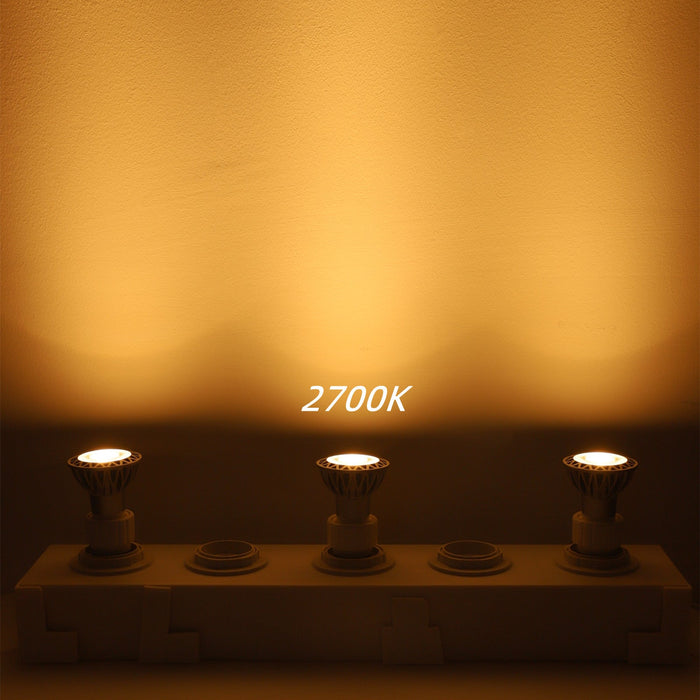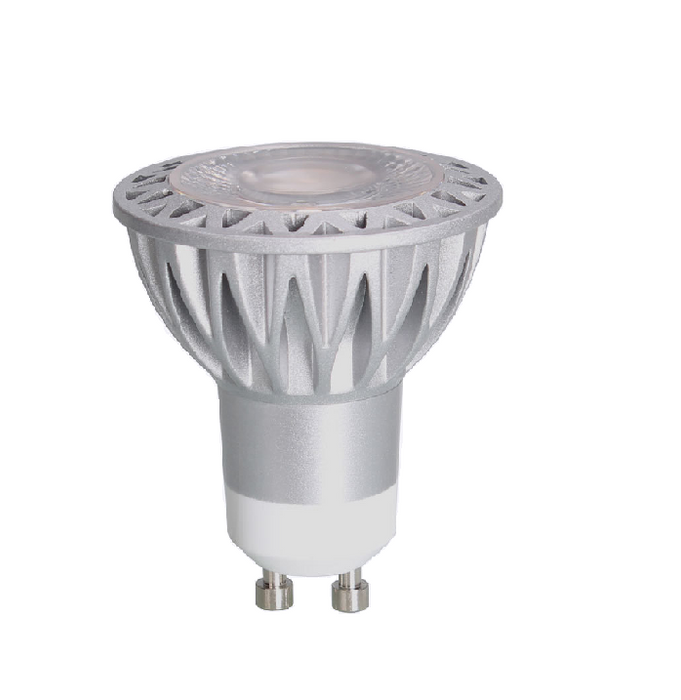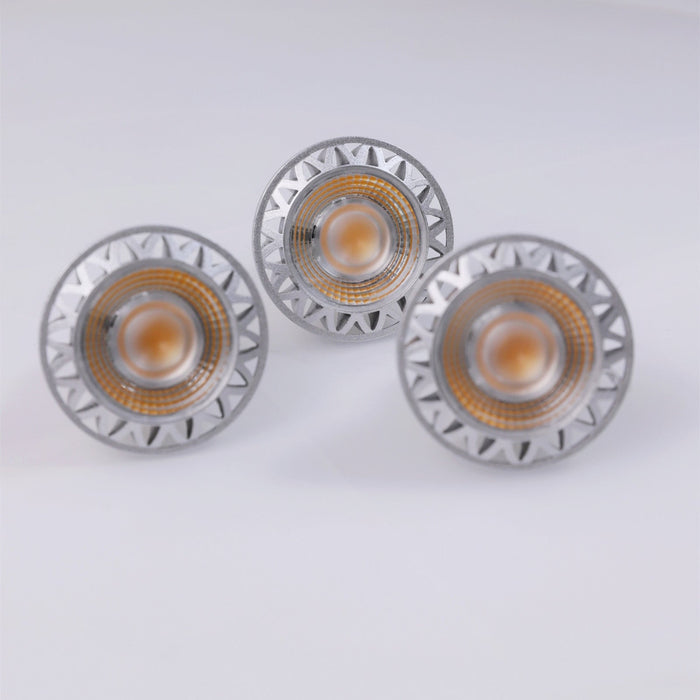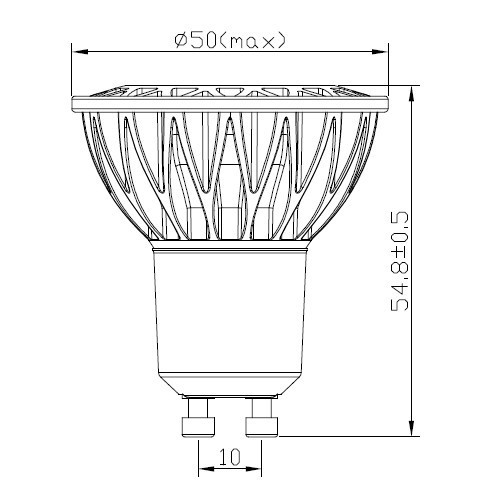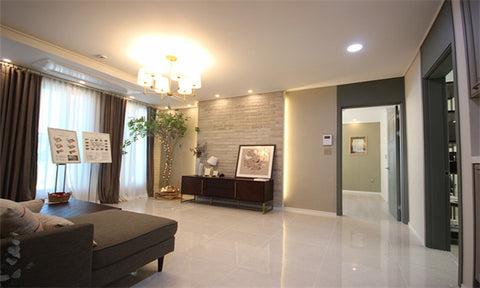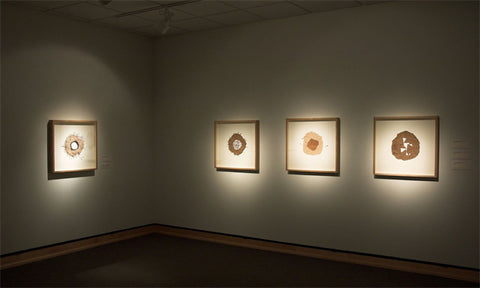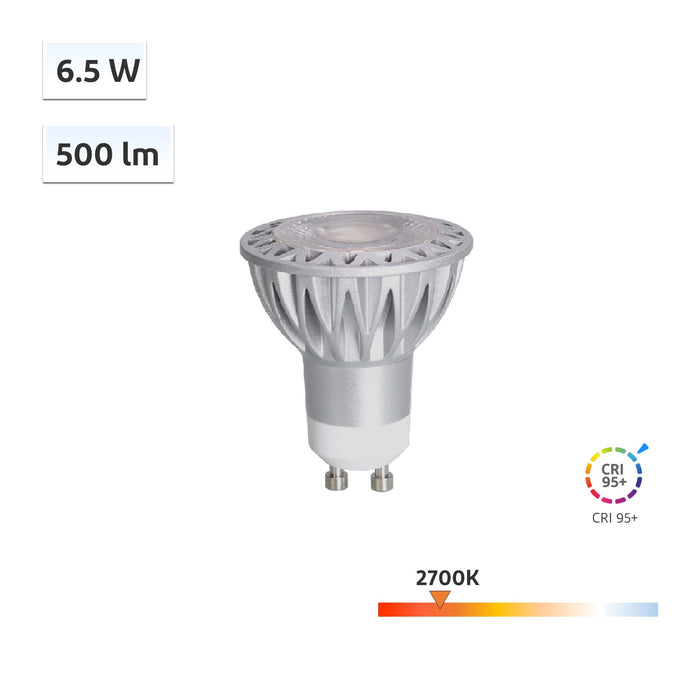
CRI-MAX™ CRI 95+ GU10 6.5W LED Spotlight 2700K - 6pcs
Frequently Asked Questions about LED Bulbs
Where do you ship from?
We ship your orders from 2 different fulfillment centers. For LED light bulb orders from the United States, we ship from California, USA, while other international orders are shipped from from Beijing, China using DHL or UPS.
Are Yuji LED bulbs dimmable?
Yes, many LED bulbs are dimmable. However, it is essential to check the product specifications or packaging to ensure compatibility with the specific dimmer switch model.
Can I use LED bulbs in enclosed fixtures?
Though LED bulbs do not generate nearly as much heat as incandescent bulbs, they are more sensitive to heat, which can affect their performance. The excess heat generated in fully enclosed fixtures will result in reduced light output, the bulb will appear to “dim” faster, and shorten the bulb’s lifetime.
So we recommend that you try not to use the bulb in an enclosed space unless the bulb is specially designed to withstand high-temperature applications.
How do I choose the right LED bulb for my needs?
When selecting an LED bulb, consider the following factors:
Lumens: The days of choosing light bulbs by wattage are over. With today’s modern LED bulbs, we need to focus on lumens instead. A lumen is a measure of visible light energy. The higher the lumens, the brighter the light. Depending on the bulb and manufacturer, LED technology typically produces 75-110 lumens/watt. As a result, LEDs are typically around 7 times more luminous than incandescent bulbs. When choosing LED bulbs to replace incandescent bulbs, use the 7:1 ratio as a rough guide.
For example, if you want to replace a 75-watt incandescent bulb, what is the approximate wattage equivalent of an LED bulb? Using a 7:1 ratio, simply divide 75 watts by 7 to get approximately 11 watts.
Color Temperature: Select the appropriate color temperature (e.g., warm white, cool white) to achieve the desired ambiance or lighting effect.
Base Type: Ensure that the LED bulb's base matches the socket or fixture you intend to use it in (e.g., E26, E27, GU10).
Dimmability: If you need dimmable lighting, verify that the LED bulb is compatible with your existing dimmer switch.
What is the difference between A19/PAR/BR shape?
An A60 LED bulb is a standard-shaped LED bulb commonly used in household lighting fixtures. It has a similar appearance to traditional incandescent A-shape bulbs but is more energy-efficient and long-lasting.
A PAR30 LED bulb is a type of directional LED bulb with a parabolic aluminized reflector (PAR) design. It is commonly used for spotlighting and accent lighting applications due to its focused beam and high intensity.
A BR30 LED bulb is a type of reflector LED bulb with a bulged reflector (BR) shape. The wide beam angle makes them ideal for general interior lighting within ceiling fixtures or downlights.
A GU10 LED bulb is a type of twist-and-lock spotlight LED bulb with a two-pin GU10 base. It is commonly used for accent lighting, such as spotlighting artwork,furniture or architectural elements.
Can you explain the distinctions among the LED bulbs of SunWave™, CRI-MAX™️ and Well24™ series?
Yuji CRI-MAX™ series: It is an "object-centric" lighting. This series is designed with a primary focus on achieving the highest Color Rendering Index (CRI). The spectrum is designed to render the original color of the object accurately.It is ideal for retail lighting, photographic studios, museums, galleries, and aquariums.
Yuji SunWave™ series: It is a"human-centric " lighting. It delivers closest-to-sunlight natural light with 99% similarity, rendering colors as true as under sunlight.People can read and work for longer under fullspectrum light sources without eye fatigue.Also because of the spectrum feature, the SunWave series performs better in advanced color metrics like TM30. It is applicable to both residentialand commercial spaces that contain most human activities, such as reading, drawing, and working.
Yuji Well24™ circadian lighting is designed to have a positive biological impact on the human circadian rhythm system. Advanced lighting technologies utilize the biologically significant 480nm radiance to effectively regulate your circadian rhythm, aligning with your body's internal clock and enhancing both mental and physical health.

